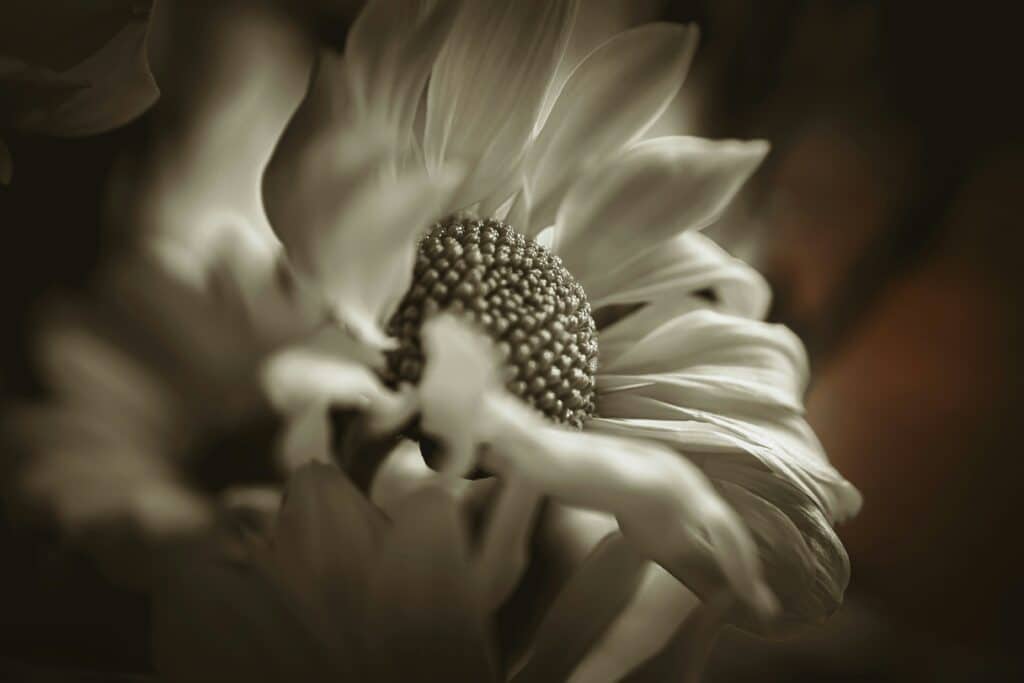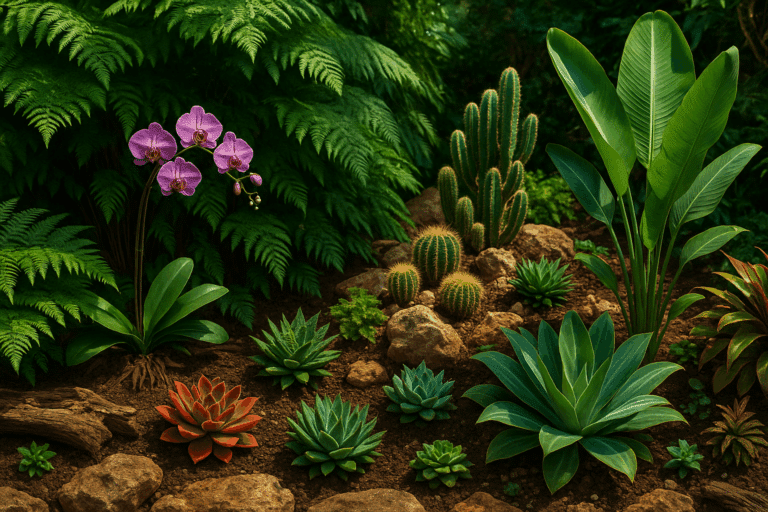This indoor plant variant is lauded for its bold aesthetic appeal and minimal maintenance requirements. The upcoming content aims to unveil the beauty of these plants and provide you with comprehensive care instructions.
In this write-up, we will embark on a journey that sheds light on the charm of Dracaena Strip plants, their origins, and the atmosphere they can create in your living space. The unique appearance and health benefits of these plants make them the perfect addition to any room, which we will delve deeper into in the following sections.

Moreover, we will unravel the mystery of maintaining these green beauties. Is it as simple as it sounds, or does it require some secret gardening skills? Fear not, because we will provide you with all the essential tips and tricks to ensure that your Dracaena Strip plants remain as strikingly beautiful as the day you bought them.
In addition, we will also discuss the common issues faced by plant owners and effective solutions to tackle them. From pests to browning leaves, we will cover it all, ensuring that your plant thrives in its environment.
Finally, we will round off with some fun facts and frequently asked questions about Dracaena Strip plants. This comprehensive guide is all you need to transform your living space into a green paradise, effortlessly and efficiently. So, get ready to unleash the beauty of Dracaena Strip plants and become the proud owner of a healthy, vibrant indoor garden.
Understanding Dracaena Strip Plants
Dracaena, popularly known as the strip plant, is a genus of about 120 different species that come in a variety of shapes and sizes. These plants are native to Africa, Southern Asia, and Northern Australia. They are characterized by their thick, succulent stems and lush, green leaves that can grow to be quite large.
Dracaena strip plants are perfect for those looking to add a touch of tropical beauty to their home or office. They are not only attractive but also remarkably hardy and require minimal care. This makes them a popular choice among beginners and seasoned gardeners alike.
These versatile plants can thrive in both residential and commercial spaces. Their striking form and elegant foliage make them popular in entryways, living rooms, and reception areas where their height and upright growth create visual interest without overwhelming the decor.
Key Features of Dracaena Strip Plants
One of the distinguishing features of Dracaena strip plants is their bold, architectural form. They can grow anywhere from 2 to 10 feet tall, depending on the specific species and the conditions in which they are grown.
The leaves are typically sword-shaped, with a bright green color that can have varying shades of yellow, white, or red. Some species also have leaves with unique patterns and coloration, adding to their visual appeal.
Species like Dracaena marginata (commonly known as Madagascar Dragon Tree) have narrow, pointed leaves with reddish-purple margins, while Dracaena fragrans (commonly known as Corn Plant) displays broader leaves with yellow or lime green stripes down the center. Each species brings a different texture, color palette, and personality to a space.
These plants grow upright from a single stem or cane, which often becomes woody as the plant matures. In older plants, this gives the Dracaena a tree-like form with a tuft of leaves at the top, while younger plants remain bushier and more compact.
Growth Habits and Seasonal Behavior
Dracaena strip plants are relatively slow-growing, but their eventual size and height can be impressive. Most varieties grow vertically with minimal lateral spreading, making them ideal for corners, hallways, or narrow spaces where width is limited but height is desired.
These plants do not undergo dramatic seasonal changes, but they grow more actively during the warmer months of spring and summer. During this active period, they may produce new leaves more frequently and benefit from occasional fertilization. In cooler months, their growth slows considerably, and care should be adjusted accordingly—less watering, no feeding, and limited movement or repotting.
Over time, Dracaena plants may shed lower leaves naturally as new ones emerge from the crown. This process keeps the plant looking tidy and prevents energy waste on older foliage. Regular pruning can help shape the plant and promote denser growth.
Environmental Preferences for Optimal Health
The success of Dracaena strip plants indoors largely depends on replicating some aspects of their native environment. These plants prefer warm temperatures, stable humidity levels, and filtered light.
Light Conditions
Dracaenas are not particularly demanding in terms of lighting, which is why they’re often found thriving in offices and indoor spaces. They do best in bright, indirect light, though they will tolerate low-light conditions. However, in low-light environments, growth may slow, and leaf coloration may fade over time.
If placed in direct sunlight, especially near west- or south-facing windows, the leaves may become scorched. Brown, dry edges or bleached spots are signs of sunburn. If natural light is inadequate, grow lights can be used to supplement and maintain healthy foliage.
Humidity and Temperature
Dracaena strip plants prefer moderate humidity levels of around 40–60%. In arid environments or during winter months when indoor heating dries out the air, it may be necessary to mist the leaves occasionally or place a humidifier nearby.
They also prefer a temperature range between 65°F to 80°F (18°C to 27°C). Exposure to cold drafts or prolonged temperatures below 50°F (10°C) can cause leaf drop or stunted growth.
Watering and Feeding Guidelines
Proper watering is one of the most important aspects of caring for Dracaena strip plants. Unlike many tropical plants, they are sensitive to overwatering and prefer their soil to dry out partially between watering sessions.
Watering Schedule
The top inch or two of soil should be dry before you water again. Overwatering leads to root rot, which manifests as yellowing leaves, a foul odor from the soil, and soft, mushy roots. In contrast, underwatering causes dry, crispy leaf tips or curling leaves. It’s important to find a balance based on your environment and pot size.
Water Quality
Dracaenas are also sensitive to chemicals like fluoride and chlorine found in tap water. If you notice browning leaf tips, it may be due to fluoride accumulation. To prevent this, use filtered, distilled, or rainwater whenever possible.
Feeding Tips
During the growing season, a balanced liquid houseplant fertilizer diluted to half strength can be applied once every 4–6 weeks. Do not fertilize during winter months when the plant is dormant. Excessive feeding may lead to salt buildup in the soil, which can damage roots and cause discoloration. Flushing the soil every few months with clean water helps remove any accumulated salts.
Choosing the Right Pot and Soil
The type of pot and soil you use for your Dracaena can significantly affect its health. These plants prefer well-draining soil that retains some moisture but does not remain soggy.
Potting Mix
A general-purpose indoor potting mix with added perlite or pumice improves aeration and drainage. Some gardeners also add a small amount of sand or orchid bark to mimic the looser soils found in tropical forests.
Containers
Dracaenas should be planted in containers with drainage holes to prevent water from pooling at the bottom. Terra cotta pots are especially effective as they help absorb excess moisture from the soil.
Repotting is typically needed every 2–3 years or when the plant becomes root-bound. Choose a pot that is 1–2 inches larger in diameter than the current one to avoid oversizing, which can lead to excessive moisture retention.
Styling Dracaena Strip Plants in Your Space
The strong vertical growth and dramatic foliage of Dracaena strip plants make them a stylish addition to nearly any room. They can complement minimalist interiors, tropical-themed decor, or even industrial spaces, thanks to their versatility and simplicity.
Living Rooms and Entryways
Place a taller Dracaena in a large floor pot to create an instant focal point in the corner of a room or beside a piece of furniture. Their upward growth draws the eye and helps break up flat visual planes.
Offices and Desks
Smaller or juvenile Dracaena plants in decorative containers can be used on desks, shelves, or side tables to add a touch of greenery without requiring frequent care.
Bathrooms
If your bathroom receives adequate indirect light, it can be a great location for Dracaena due to the naturally higher humidity levels. Just make sure there is enough ventilation to prevent mold or mildew buildup in the pot.
Grouped Plant Displays
Combine Dracaena strip plants with other indoor species such as pothos, ZZ plants, or peace lilies to create a layered, textured plant display. Use contrasting leaf shapes and heights for visual balance.
Propagation and Maintenance Tips
Propagation of Dracaena is typically done through stem cuttings. Select a healthy stem and cut it into segments 4–6 inches long. Allow the cuttings to dry for a few hours before planting them in moist, well-draining soil or placing them in water until roots develop. Once rooted, transfer the cuttings to a pot with fresh soil.
Occasional pruning helps maintain the plant’s shape and encourages new growth. Remove any yellowing or damaged leaves at the base with clean scissors. Trimming back leggy stems also promotes fuller growth, especially in older plants that may have become sparse.
How to Care for Dracaena Strip Plants
Despite their exotic appearance, Dracaena strip plants are surprisingly easy to care for. They are highly adaptable and can tolerate a range of conditions.
Lighting Requirements
Dracaena strip plants thrive in bright, indirect light. However, they can also tolerate lower light conditions, making them an excellent choice for spaces that don’t receive a lot of natural sunlight.
Watering
Overwatering is a common mistake that can lead to root rot in Dracaena strip plants. It is recommended to let the soil dry out between waterings. The plant’s leaves will start to droop if it is thirsty, providing a visual indicator when it is time to water.
Soil and Fertilization
These plants prefer well-draining soil. A standard potting mix combined with perlite or sand can provide the right conditions. As for fertilization, a balanced, water-soluble fertilizer applied during the growing season should suffice.
Common Problems and Solutions
Like any plant, Dracaena strip plants can encounter a few issues. However, with quick identification and appropriate action, these problems can be easily mitigated.
Leaf Spot
This is a common issue that manifests as yellow or brown spots on the leaves. It can be caused by a variety of factors, including overwatering or high humidity. To treat leaf spot, reduce watering frequency and ensure the plant is in a well-ventilated area.
Root Rot
Overwatering can also lead to root rot, a serious condition that can kill the plant if left untreated. If you notice a musty smell or black, mushy roots, repot the plant in fresh, well-draining soil and reduce watering.
The Benefits of Dracaena Strip Plants
Dracaena strip plants offer more than just aesthetic appeal. They are also known for their air-purifying qualities.
Improving Indoor Air Quality
Dracaena strip plants are capable of removing certain toxins from the air, including benzene, formaldehyde, and trichloroethylene. This makes them a healthy addition to any indoor space.
Boosting Mood and Productivity
Studies have shown that having plants in the workspace can improve mood and productivity. The presence of greenery can reduce stress levels, increase focus, and promote a sense of well-being.
The Versatility of Dracaena Strip Plants
With their dramatic appearance and minimal care requirements, Dracaena strip plants make a fantastic addition to any indoor or outdoor space.

Indoor Use
Thanks to their adaptability, Dracaena strip plants can flourish in a variety of indoor environments, including offices, living rooms, and bedrooms.
Outdoor Use
While they are popular as indoor plants, Dracaena strip plants can also be grown outdoors in warmer climates. They can be used as statement pieces in the garden or incorporated into mixed plantings for a tropical touch.
In summary, Dracaena strip plants are a perfect choice for those seeking an effortlessly bold plant that requires minimal maintenance. With their architectural form, air-purifying qualities, and easy care, these plants truly offer the best of both worlds.
Conclusion
In conclusion, the captivating allure of Dracaena Strip Plants is certainly undeniable. Not only do these plants offer an effortlessly bold aesthetic to any space, but they also require minimal maintenance, making them a perfect choice for both seasoned plant lovers and novice gardeners. Their rich, deep green leaves and unique growth pattern add a touch of the exotic to your home or office, providing an unbeatable visual appeal.
With their impressive resilience and low-maintenance nature, these plants have proven to be excellent companions in the journey of plant parenthood. Regardless of your schedule or prior plant care experience, Dracaena Strip Plants will indeed thrive and add their distinct beauty to your space.
Moreover, their air-purifying qualities further contribute to creating a healthy, rejuvenating environment. A testament to the robustness of nature, these plants continue to thrive with minimal care, offering a serene, beautiful, and fresh environment for you to relax, work, or play.
Embrace the charm of Dracaena Strip Plants and enjoy the myriad benefits they bring to your surroundings. Their captivating appeal and low-maintenance nature make them an undeniable favorite, reflecting nature’s simplistic beauty in the most stunning way. So, step into the world of easy plant care and let the beautiful Dracaena Strip Plants transform your space. 🌿



